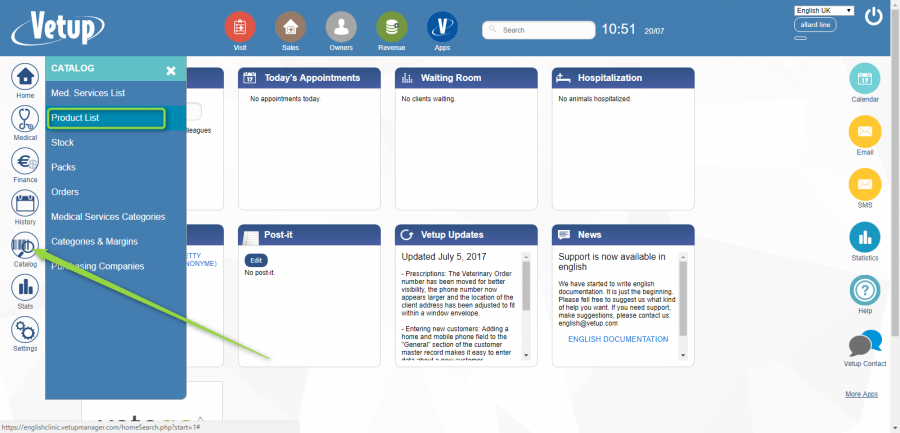고정 헤더 영역
상세 컨텐츠
본문
August 29, 2019 Please note: The oral rabies vaccination (ORV) program is scheduled for northeastern Ohio Aug. 23, 2019.Rabies is a preventable viral disease of mammals most often transmitted through the bite of a rabid animal or, less commonly, when saliva from an infected animal gets into an open wound or onto a mucous membrane.Rabies is almost always fatal once clinical symptoms appear; however, it is 100% preventable in humans through prompt and appropriate medical care. In addition to washing any bite wound with soap and water as soon as possible, animal bite victims should consult with their doctor and promptly report the incident to the local health department.Ohio's local health departments investigate approximately 20,000 animal bite and exposure incidents annually. Because of health department activities and medical treatment, human rabies is rare in the United States. Ohio's last human rabies case was in 1970.
Human Rabies Where does rabies occur in Ohio?Bat-strain rabies is present everywhere in Ohio with rabid bats having been identified from nearly all of Ohio's counties over the years.In 1997, a new strain of rabies in wild raccoons was introduced into northeastern Ohio from Pennsylvania. Every year, the Ohio Department of Health and other state and local agencies partner with the U.S.
Department of Agriculture (USDA) Animal and Plant Health Inspection Service Wildlife Services to immunize wild raccoons for rabies using an oral rabies vaccine. This effort has created a barrier of immune animals that reduced animal cases and prevented the spread of raccoon-strain rabies into the rest of Ohio.The map below displays animal rabies cases by species in Ohio this year.Please download the attached resource for animal rabies data for the previous five years. Contact the Zoonotic Disease Program (ZDP) for animal rabies data for other years at. How do you prevent rabies in people?Human rabies is 100% preventable.
Here are a few things you can do to protect yourself from rabies.In general:. Avoid contact with wild animals and animals you do not know. Vaccinate your animals against rabies; your veterinarian can vaccinate your pet to prevent them from acquiring the disease from wildlife, and thereby transmitting it to humans. Maintain control of your pets to reduce their exposure to wildlife. Spay or neuter to decrease the number of stray animals. Eliminate food and nesting or hiding places for wild animals from residential areas. Do not feed wildlife.

If you must feed your pets outside, bring the food in at night or keep it covered.If you are bitten by animal:. Wash any wounds immediately.
One of the most effective ways to decrease the chance for infection is to wash the wound thoroughly with soap and water. Call your doctor and your local health department; they may recommend that you get a series of shots commonly known as 'rabies post-exposure prophylaxis (PEP).' . If your pet fought with a wild animal, call your veterinarian and the local health department to report the incident; your animal may need to get a rabies vaccine and be isolated for a period of time.Note: Rabies pre-exposure prophylaxis (PrEP) is available for people working with wildlife or other animals on a frequent basis. Ask your healthcare provider if you think you need rabies pre-exposure prophylaxis. How does a person get rabies?The rabies virus is found in the saliva and brain (neural tissue) of an infected animal.
The most common way people are exposed to rabies is from an animal bite.
Popular in Horses.The most comprehensive guarantee available.First and only FDA-approved antibiotic for horses that offers a full course of therapy in just two doses.Annual vaccination with CORE EQ INNOVATOR helps provide the protection your horse needs.Treats and controls encysted small strongyles, bots and roundworms. QUEST PLUS contains an additional active ingredient for efficacy against tapeworms.Patented and scientific method of determining fair service pricing to improve your clinic's profitability. toggle quick access links. DIRECTIONS: Dogs, Cats and Ferrets: General Directions: Shake well. Aseptically administer 1 mL subcutaneously.

Dogs may be vaccinated intramuscularly or subcutaneously. Primary Vaccination: Administer a single 1-mL dose at 3 months of age or older to healthy dogs, cats and ferrets. A repeat dose should be administered 1 year later. Revaccination (dogs and cats): Subsequent revaccination every 3 years with a single dose is recommended.
Serial Numbers Nero
Revaccination (ferrets): Annual revaccination with a single dose is recommended. Cattle and Sheep: General Directions: Shake well. Aseptically administer 2-mL intramuscularly. Primary Vaccination: Administer a single 2-mL dose at 3 months of age or older to healthy cattle and sheep. A repeat dose should be administered 1 year later. Store at 2°-7°C. Prolonged exposure to higher temperatures may adversely affect potency.
Do not freeze.Use entire contents when first opened.Sterilized syringes and needles should be used to administer this vaccine.Do not vaccinate within 21 days before slaughter. Contains gentamicin as preservative.As with many vaccines, anaphylaxis may occur after use. Initial antidote of epinephrine is recommended and should be followed with appropriate supportive therapy.This product has been shown to be efficacious in healthy animals. A protective immune response may not be elicited if animals are incubating an infectious disease, are malnourished or parasitized, are stressed due to shipment or environmental conditions, are otherwise immunocompromised, or the vaccine is not administered in accordance with label directions.Technical inquiries should be directed to Zoetis Veterinary Services (800) 366-5288 (USA), (800) 461-0917 (Canada).For veterinary use only.




